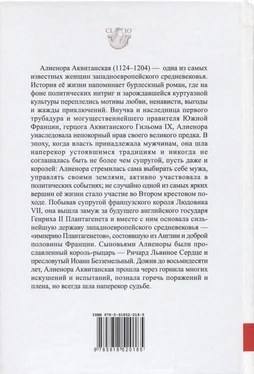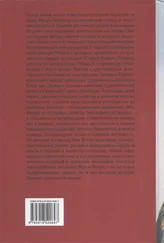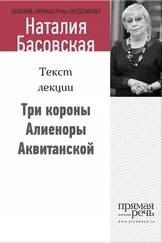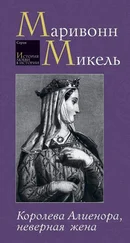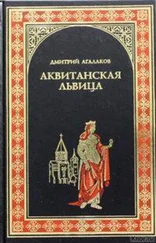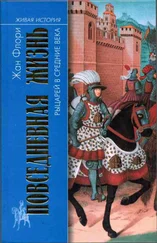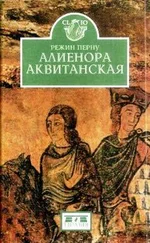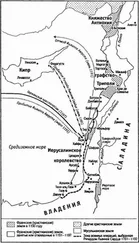Ж. Дюби (Duby, G., Guillaume le Maréchal ou le meilleur chevalier du monde, Paris, 1984, p. 49 sq.), отмечает то, насколько редки в этом тексте упоминания о женщинах, и подчеркивает его идеологическую значимость.
Richardson, H. G., «The Letters and Charters of Eleanor of Aquitaine», English Historical Review, 74, 1959, p. 193–213; этого автора часто называют «издателем» хартий Алиеноры, что ошибочно.
Hivergneaux, M., «Aliénor d’Aquitaine: le pouvoir d’une femme à la lumière de ses chartes (1152–1204)» dans La Cour Plantagenêt (1154–1204)…, Poitiers, 2000, p. 63–87; id., «Aliénor duchesse d’Aquitaine et deux fois reine: rôle et pouvoir d’une femme au XII esiècle (v. 1124/1137–1204)» dans Reines et princesses au Moyen Âge, Actes de cinquième colloque international de Montpellier, université; Paul Valéry (24–27 nov. 1999), vol. I, Les Cahiers du CRISIMA, 2001, p. 43–62; id., «Queen Eleanor and Aquitaine, 1137–1189», dans Wheeler, B. et Parsons, J. C. (éd.), Eleanor of Aquitaine…, op. cit., p. 55–76.
Hivergneaux, M., «Aliénor duchesse d’Aquitaine et deux fois reine: rôle et pouvoir d’une femme au XII esiècle (v. 1124/1137–1204)», op. cit., p. 53.
Ibid.
Ibid., p. 75 sq. См. также Hivergneaux, M., «Aliénor d’Aquitaine: le pouvoir d’une femme à la lumière de ses chartes (1152–1204)», op. cit., p. 73 sq.
Aurell, M., «La détérioration du statut de la femme aristocratique en Provence (X e−XIII esiècles)», La Moyen Âge, 91, 1985, p. 5–32; см. также новые уточнения этого же автора в Aurell, M., «Stratégies matrimoniales de l’aristocratie (IX e−XIII es.)», op. cit., p. 185–202.
Marchegay, P., «Chartes angevines des XI e−XIII esiècle», Bibliothèque de l’École des Chartes, 36, 1875, p. 441.
Здесь я пользуюсь выражением М. Иверно: Hivergneaux, M., «Queen Eleanor and Aquitaine, 1137–1189», op. cit.: я согласен с выводами этого автора, за исключением некоторых нюансов, указанных выше.
Duby, G., Dames du XII esiècle, Paris, 1995, p. 36–37.
Brown, E. A. R., «Eleanor of Aquitaine: Parent, Queen and Duchesse», op. cit., p. 9–34, в частности, p. 23 sq. См. также Brown, E. A. R., «Eleanor of Aquitaine Reconsidered», в Wheeler, B. et Parsons, J. C. (éd.), Eleanor of Aquitaine, Lord and Lady, New York, 2003, p. 1–54.
См., в частности, Turner, R. V., «Eleanor of Aquitaine in the Gouvernments of her sons Richard and John», dans Wheeler, B. et Parsons, J. C., op. cit., p. 77–95. et Martindale, J., «Eleanor of Aquitaine» dans Nelson, J. L., Richard Cœur de Lion in History and Myth, Londres, 1992, p. 17–50.
См. по этому поводу полезное сравнение, сделанное между Алиенорой и дамами, принадлежавшими аристократическому обществу ее времени, в De Aragon, R. С., «Wife, Widow, and Mother: Some Comparisons between Eleanor of Aquitaine and Noblewomen of the Anglo-Norman and Angevin World», dans Wheeler, B. et Parsons, J. C., (éd.), op. cit., p. 97–113, в частности, p. 109 sq.
Tanner, H. J., «Queenship: Office, Custom or Ad Hoc? The Case of Queen Mathilda III of England (1135–1152)», Wheeler, B. et Parsons, J. C. (éd.), op. cit., p. 133–158. О роли «императрицы» Матильды см. Chibnall, M., The Empress Mathilda: Queen Consort, Queen Mother and Lady of the English, Oxford, 1991; о покровительстве, осуществляемом королевами до Алиеноры, см. Huneycutt, L. L., «Alianora Regina Anglorum…», dans Wheeler, B. et Parsons, J. C. (éd.), op. cit., p. 115–132.
См. Huneycutt, L. L., Matilda of Scotland and the Development of Medieval Queenship, Woodbridge, 2003.
McCash, J. H., «The Cultural Patronage of Medieval Women: an overview», dans The Cultural Patronage of Medieval Women (éd. McCash, J. H.), Athens (Georgia), 1996, p. 1–49, в частности, p. 6 sq.
Jeanroy, A., La Poésie lyrique de troubadours, Paris, 1934, в частности, p. 426 sq.; Kelly, A., Eleanor of Aquitaine…, op. cit., p. 162 sq., 183 sq.
См. на этот счет очень осторожную позицию Лабанда (Labande, E. R., «Les filles d’Aliénor d’Aquitaine: étude comparative», CCM, 113–114, 1986, p. 101–112).
См. Shadis, M. et Berman, C. H., «A Taste of the Feast: Reconsidering Eleanor of Aquitainès Female Descendants», dans Wheeler, B. et Parsons, J. C., (éd.), op. cit., p. 177–211.
Gobry, L, Louis VII, père de Philippe Auguste, Paris, 2002, p. 170. 3. Келли (Kelly, A. R., «Eleanor of Aquitaine and her Courts of Love», op. cit., p. 3–19) не принимает гипотезы о покровительстве Генриха II, считая, что у него были «слишком простые вкусы» (?!) для того, чтобы создать аристократическую среду такого качества.
См., например, Gouttebroze, J.-G., «Henri II Plantagenêt, patron des historiographes anglo-normands en langue d’o”l», dans La Littérature angevine médiéval, Angers, 1981, p. 91–109.
Brown, E. A. R., «Eleanor of Aquitaine Reconsidered», в Wheeler, В. et Parsons, J. C. (éd.), op. cit., p. 1–54, в частности, p. 3, note 18.
Grant, L., «Le patronage architectural d’Henri II et de son entourage», CCM, 37, 1994, p. 73–84. Об идеологической значимости гробниц Фонтевро см. Nunez Rodriguez, M., «Los “gisants sculptes” de Fontevraud y la estrategia simbolica de la iconografia funeraria сото expresion de poder», dans Poder y sociedad en la Galicia medieval, Santiago de Compostela, 1992, p. 75–109.
Hallam, E. M., «Henry II as a founder of monasteries», dans Journal of Ecclesiastical History 28, 1977, p. 113–132.
См. на этот счет Nolan, K., «The Queen’s Choice: Eleanor of Aquitaine and the Tombs at Fontevraud», dans Wheeler, B. et Parsons, J. C. (éd.), op. cit., p. 377–405, et Wood, Ch. T., «Fontevraud, Dynasticism, and Eleanor of Aquitaine», ibid., p. 407–422.
Cf. Lozinski, J. L., «Henri II, Aliénor d’Aquitaine et la cathédral de Poitiers», CCM, 37, 1994, p. 91–100 et Caviness, M. H. «Anchoress, Abbess and Queen: Donors and Patrons or Intercessors and Matrons?» dans McCash, J. H., éd., The Cultural Patronage of Medieval Women, Athens (Georgia), 1996, p. 105–154.
Caviness, M. H., «Sugar’s Glass at Saint-Denis: The State of Research», dans P. Gerson (éd.), Abbott Suger and Saint-Denis: A Symposium, New York, 1986, p. 267.
Читать дальше
